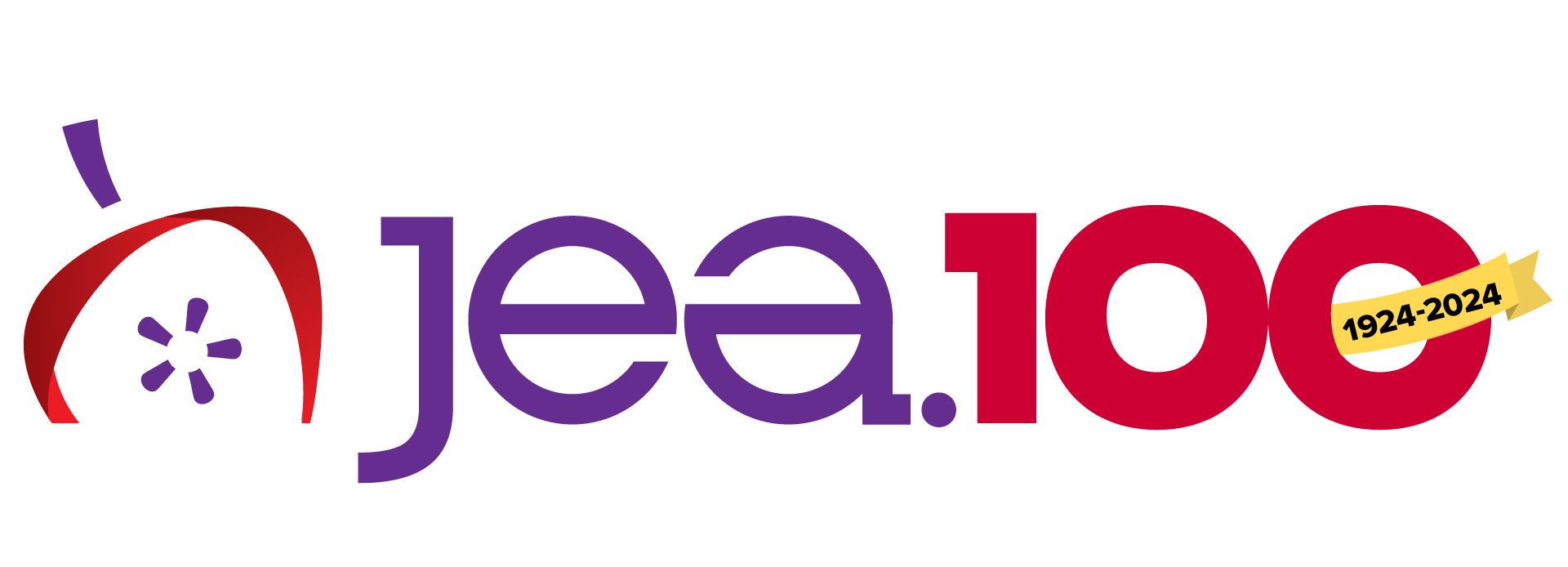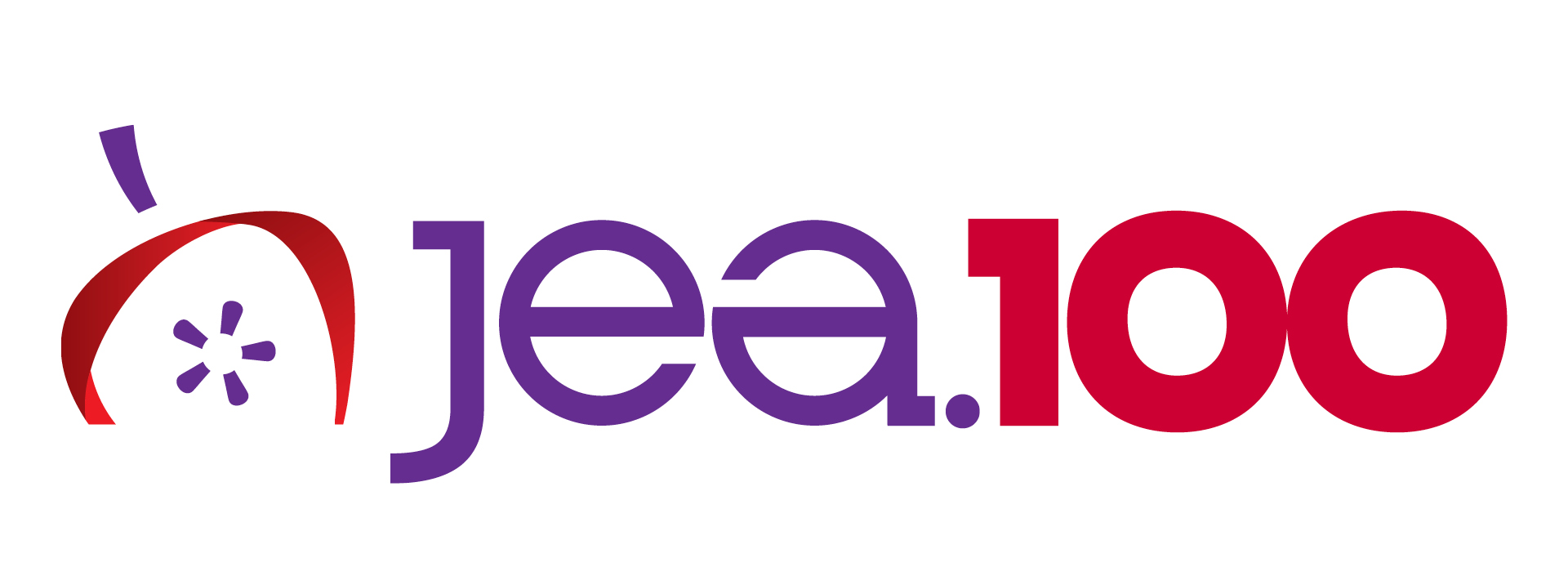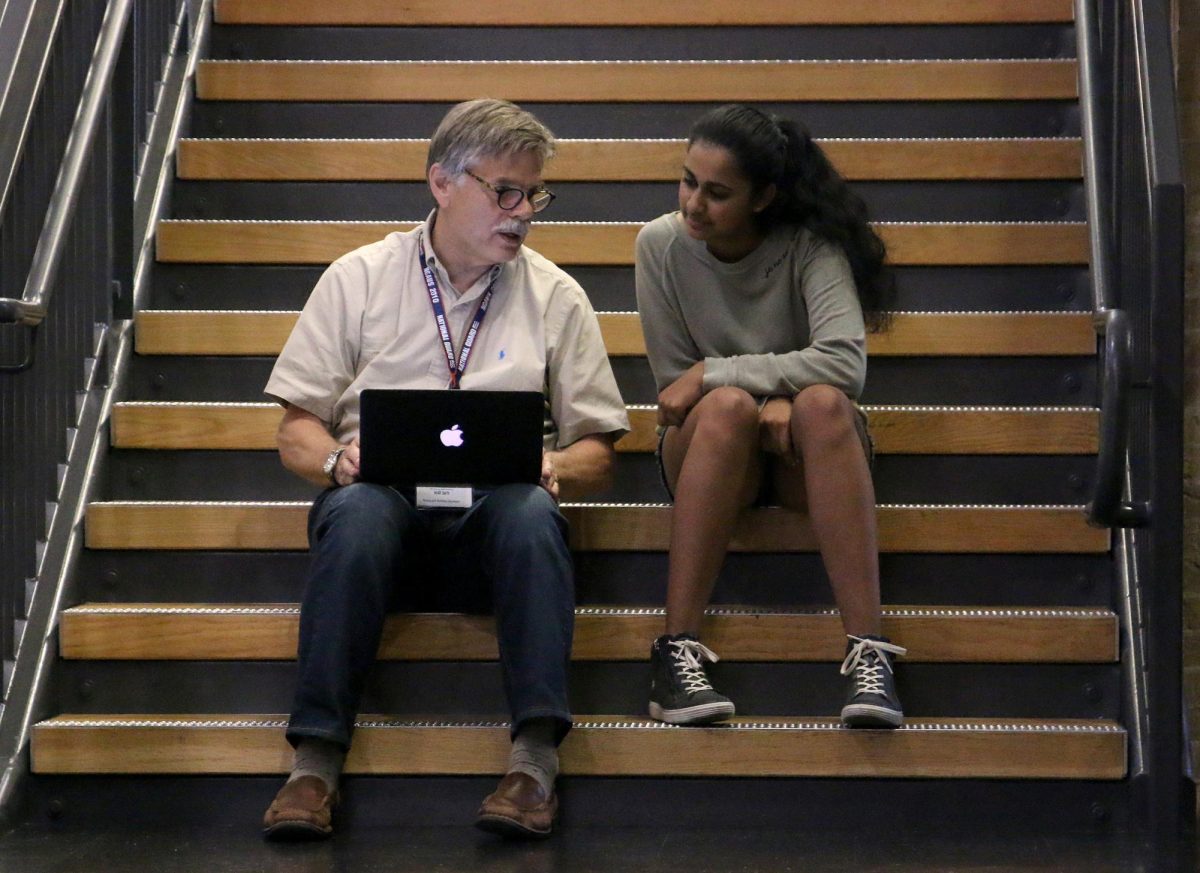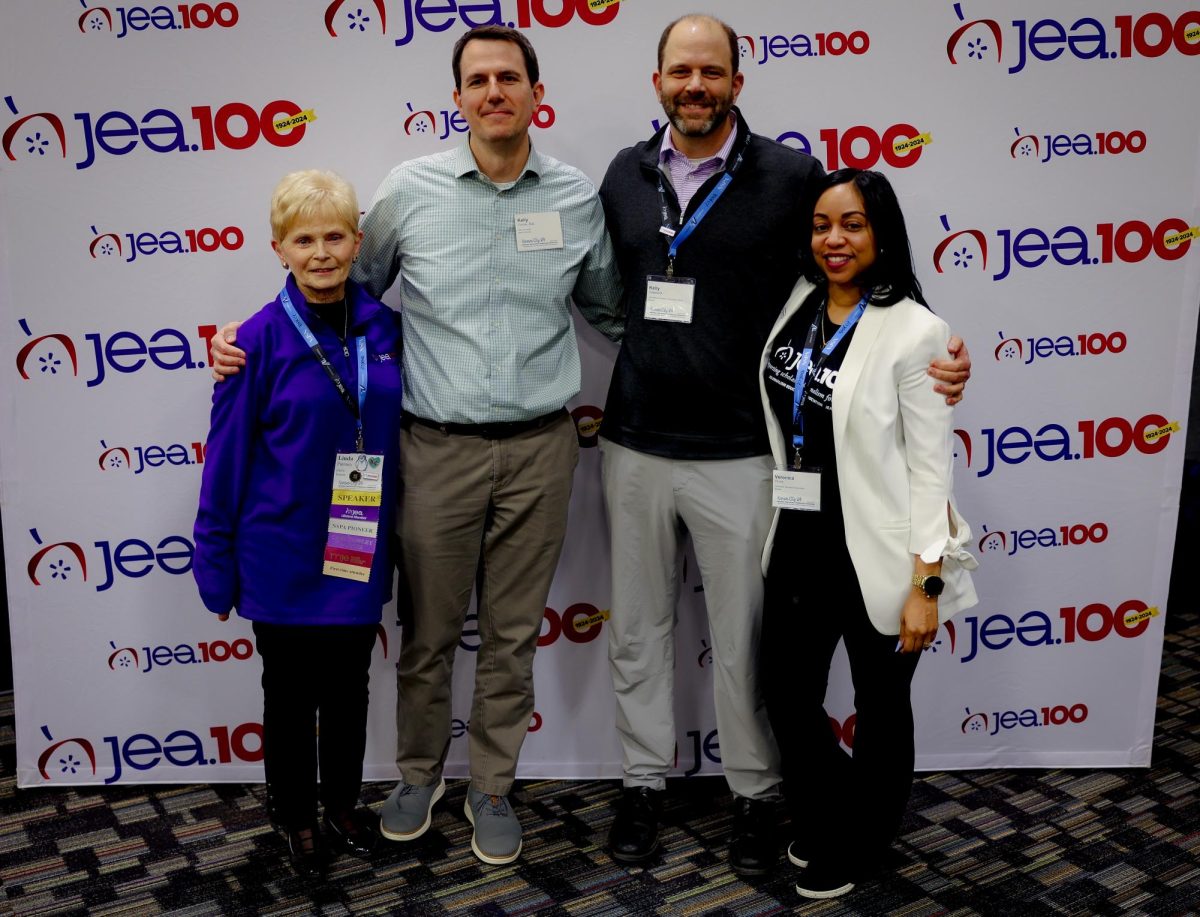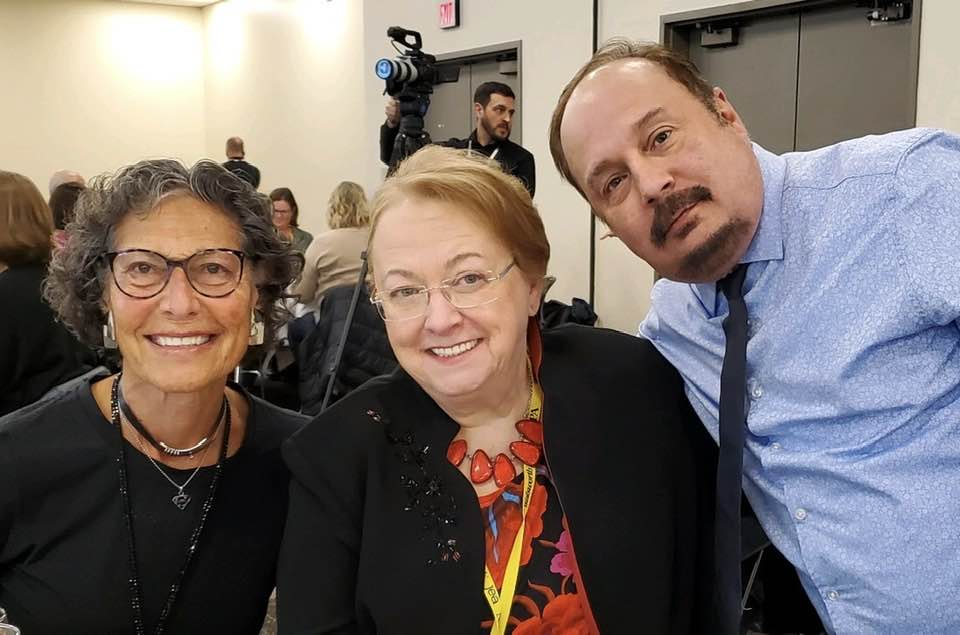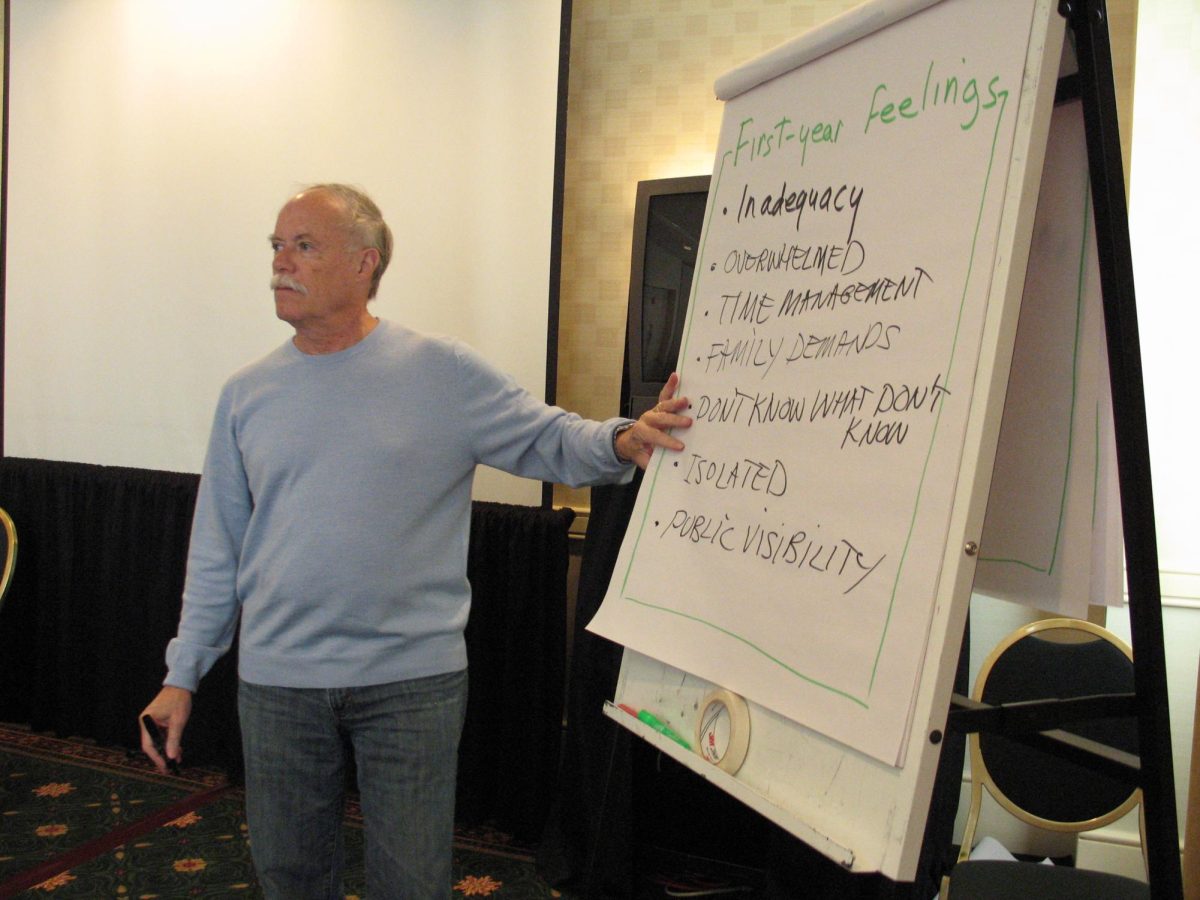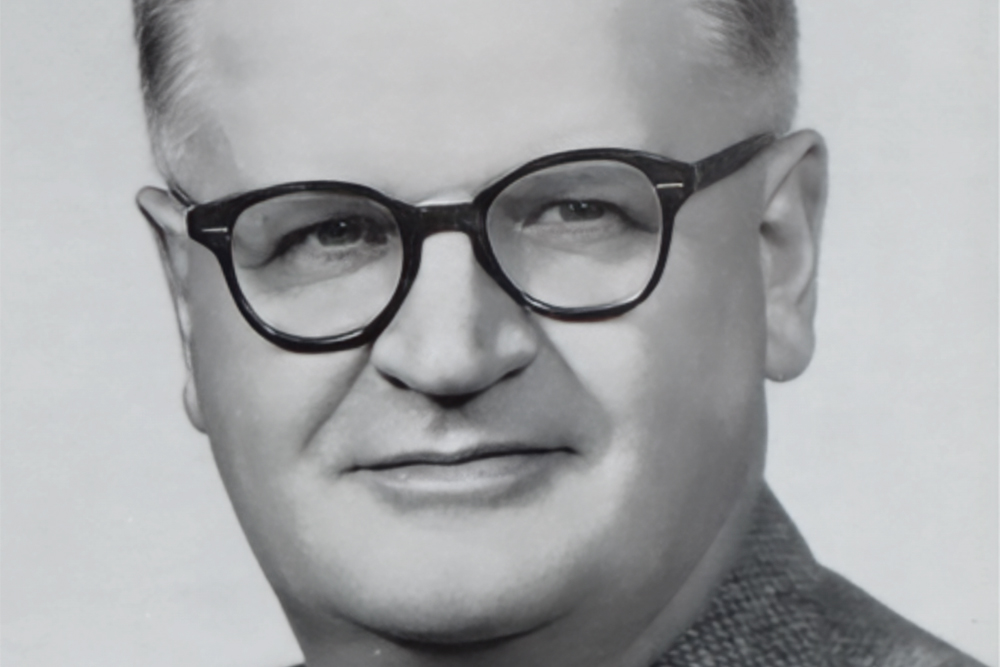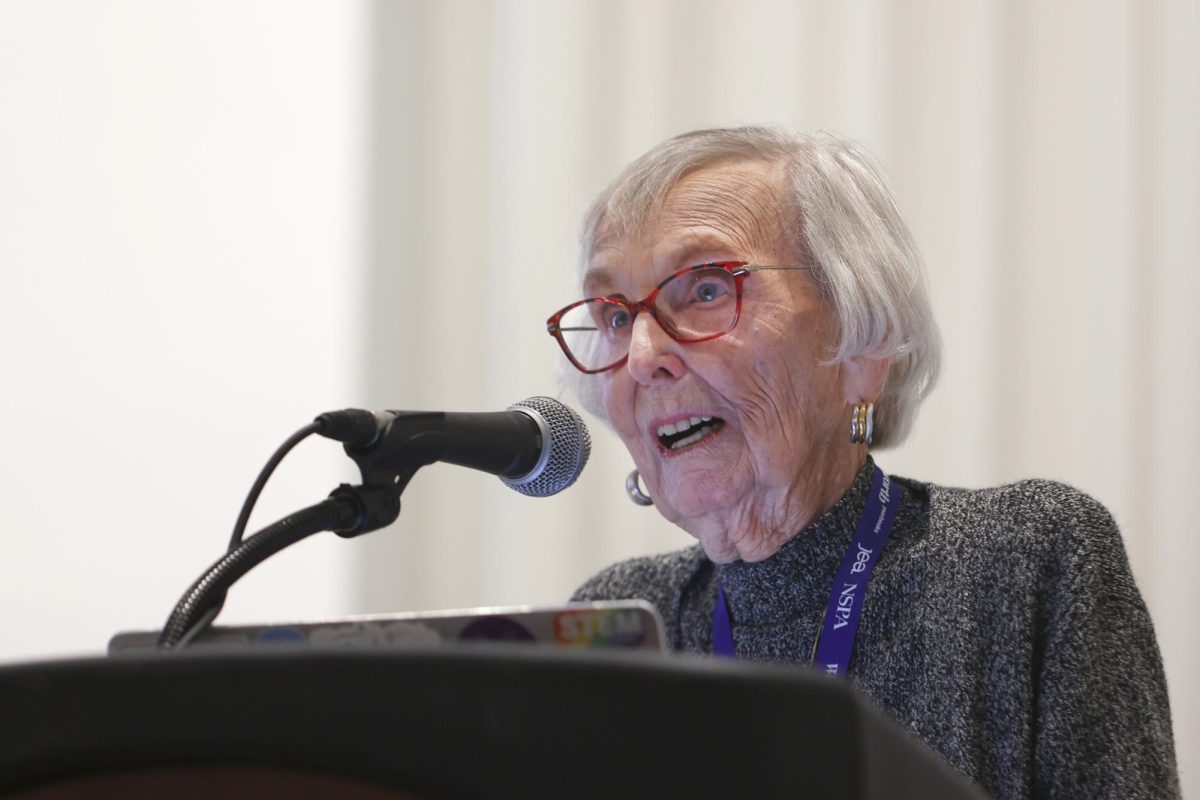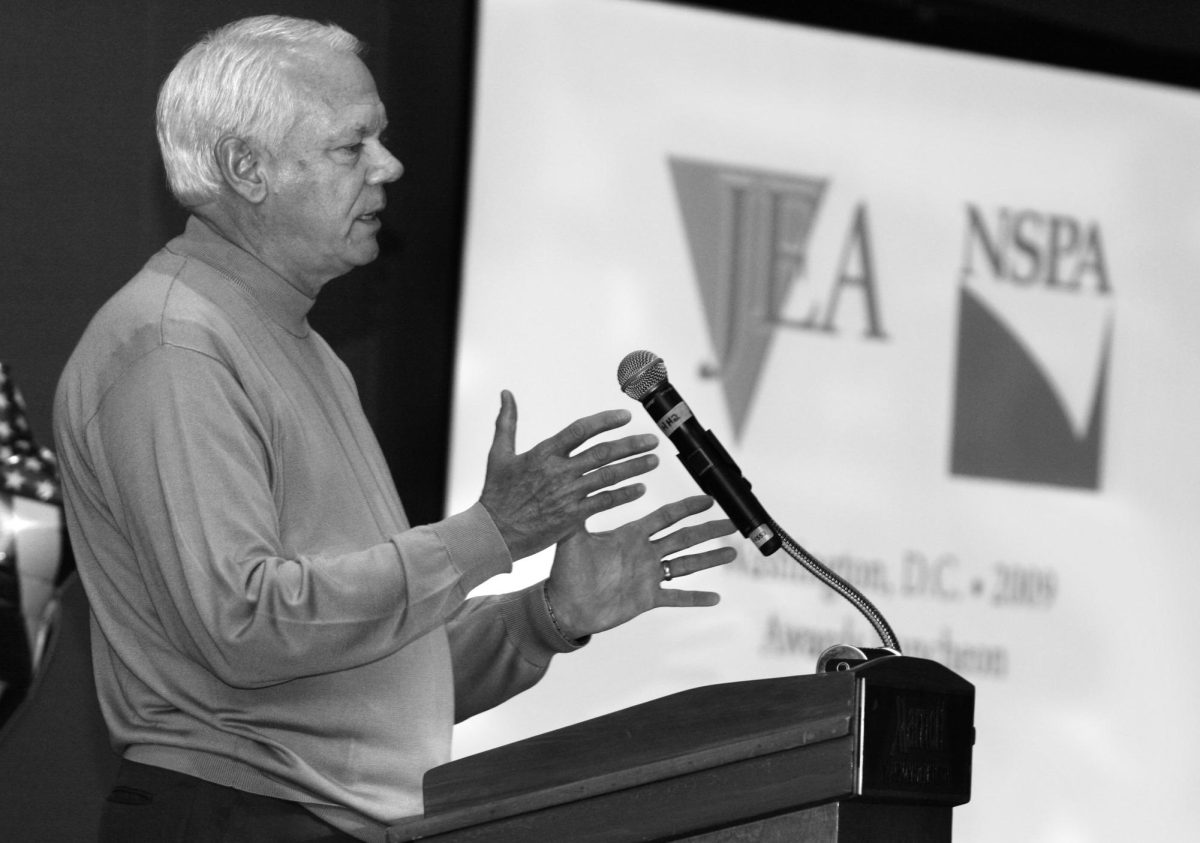When Bobby Hawthorne received the Carl Towley Award in 2007, it was, in many ways, the culmination of a love affair that started when he was a junior at a tiny school in Northeast Texas. He took journalism because he didn’t want to take math, science, shop or a foreign language, and he ended up being the only boy in the class.
“I played sports, and I liked to write, so I wrote sports,” he said. “One day, we had a guest speaker, and he asked us, ‘Who’s the best writer in the class?’ The girls in the class turned and pointed at me and said, ‘He is.’ Frankly, I was shocked.”
Not for long. He qualified for the State Meet in Austin in feature writing that spring, and then the next year edited the sports sections of both the newspaper and the yearbook. A story he wrote about the season-ending defeat placed first in the state, and then placed first, second and third in the State Meet editorial, feature and headline write-offs.
Some of this caught the attention of the sports editor of the local daily newspaper, who offered him a job as a stringer, which was both a blessing and a curse. As a full-time college freshman, he was also putting in 20 or more hours a week as a sportswriter. One week, he was assigned to cover his alma mater during an unusually bad football season, which meant he was expected to tell the truth, even though no one wanted to hear it. The truth was, he expected his hometown team to lose to a state-ranked team, and he said so in print.
During the pep rally before the game, the head coach accused him of being a traitor.
“That night, I was walking up the stands to the press box, and I heard a smattering of boos, and I thought, ‘Oh, the refs must have just walked out on the field.’ But once I got inside the press box, a friend told me, ‘No. They were booing you.’ It bothered me at first, but then I laughed it off. My dad was probably right there with them.”
•••
Hawthorne earned a degree in journalism from the University of Texas at Austin, then worked for two years for the Tyler (Texas) daily newspaper, first as a sports writer, then as a wire editor and a general assignment reporter. In 1977, he returned to Austin to accept a job as a media liaison for the organization that governs almost all of the Texas public high school extracurricular activities.
That’s how he became reacquainted with scholastic journalism. In 1979, he was appointed director of journalism, which put him in contact with many of the great student publication advisers of that era, particularly Prof. Jim Paschal at the University of Oklahoma and the inimitable Charles E. “Chuck” Savedge of Verona, Virginia.
“They were the gatekeepers, and for some reason, they invited me in,” Hawthorne said. “All the important connections, I made through them. Everything I needed to know about directing a scholastic press association, they taught me. I had other mentors, but Chuck and Jim were fundamental to my success.
Paschal brought him in as a teacher at his summer publications workshop at OU, and Chuck invited him to join the faculty at Ball State University.
“That’s how I met teachers like Bruce Watterson, John Cutsinger, John Hudnall, Nancy Patterson, Ben Van Zante, Joe Glowacki, Judi Coolidge, Paul Ender and so many others,” Hawthorne said. “I also met Bob Button from Grosse Pointe, Michigan, and Howard Spanogle from Chicago, and they would both play a pivotal role in my career.”
Button, a 1970 Carl Towley award winner, engineered Hawthorne’s invitation to join the summer workshop faculty at Michigan State, where Hawthorne made lifelong friends, and Spanogle strong-armed him into scrambling together his lecture notes into a manuscript that would become “The Radical Write,” his seminal textbook on student reporting and writing.
“Howard hated the title, but I liked it,” Hawthorne said. “It reflected the moment, and it’s allowed the book to evolve with the times. We’re now in the fourth edition, and it’s as relevant if not more relevant than ever.”
•••
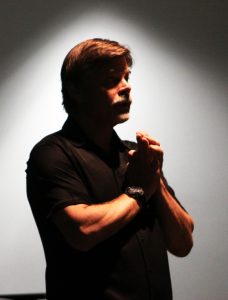
Hawthorne remains a popular workshop and convention speaker, mostly because of his talent as a storyteller. “I got more than I gave,” he said. “I studied Chuck Savedge and David Knight and H.L. Hall. Their classes were fun but substantive. Humor as a means to an end, not the end.”
Hawthorne has also been a regular contributor to scholastic media periodicals as well as social media discussions, which, more often than not, involve free speech issues. He concedes that administrators are often ham-fisted and boorish, but defaulting into crisis mode every time a whiff of a censorship or prior restraint issue bubbles up is self-defeating.
“For better or worse, we’re wedded to administrators, and we need to stop automatically demonizing them,” he said. “Besides, censorship and prior restraint aren’t our biggest problems. It’s convenient and self-gratifying to think they are, but they’re not. We are our biggest problem.”
He begged to explain.
“This is where I hang myself,” he said. “First, playing ‘Gottcha is bad journalism. It’s not our job to embarrass the powers that be. Second, it’s not our job to teach sex education. That is, it’s not our job to teach a 14-year-old how to put on a condom. That’s someone’s job, but it’s not ours’. Our job is to report why and so what if no one is doing that job.”
Third, Hawthorne said student journalists need to improve their basic reporting skills. That is, they need to ask insightful questions that lead to answers that do more than state the obvious. And here, he added, is the greatest challenge facing scholastic journalism today.
“The biggest obstacle or challenge or whatever you want to call it isn’t about the First Amendment,” Hawthorne said. “It’s the lack of critical thinking and basic writing skills among students. Students are coming into journalism classes having never read a newspaper or a news magazine or watched 30 minutes of the evening news. They have little or no idea what’s happening in the world or in their neighborhood.
“Also, these students have very weak social and leadership skills,” he said. “They want to do everything virtually. They don’t want to interview once, much less two or three times. They don’t want to edit or proof. They want to write off the top of their heads or, as I’m certain we’re about to see, AI the hell out of everything. This is our biggest problem. How do we expect young people who don’t know and don’t care that they don’t know to cover a complicated story about a topic of real importance instead of sloganeering?”
That’s the big challenge of the 21st Century, he insists.
“Running pie charts and lists of favorite ice cream brands fills up space, but that’s about all ,” Hawthorne said. “We need to delve deeper into the topic to provide readers with the information they don’t already have so that they can begin the process of becoming informed citizens. God knows we need more of them.”
•••
Hawthorne turned 71 last October. He said he’s given his last keynote, and he’s cut way back on his summer workshops and spring conventions, mostly because he’s playing senior league softball and hates missing the Monday and Thursday morning games.
“I have so many great friends scattered all across the country,” he said. “It’ll be hard to keep up with them, now that I’m not on the road. The new generation is emerging, and good for them. I can imagine how horrified some of the older advisers were when they heard me back in 1985, telling their students to thumb their noses at the inverted pyramid. I’m sure some of the young advisers today would like to do the same when they hear me talk about anecdotal leads. And so it goes.”
Hawthorne said he expects JEA to continue to serve as the vital source for all things journalism education.
“JEA has the bully pulpit,” he said. “Through its fall and spring conventions, it allows advisers time and a place to interact, collaborate, recharge and rededicate themselves to the noble cause. It’s a tough time to be a journalist and/or a journalism educator, but there’s never been a better time. Maybe you get booed a little now and then walking up to the press box. Laugh it off.”
